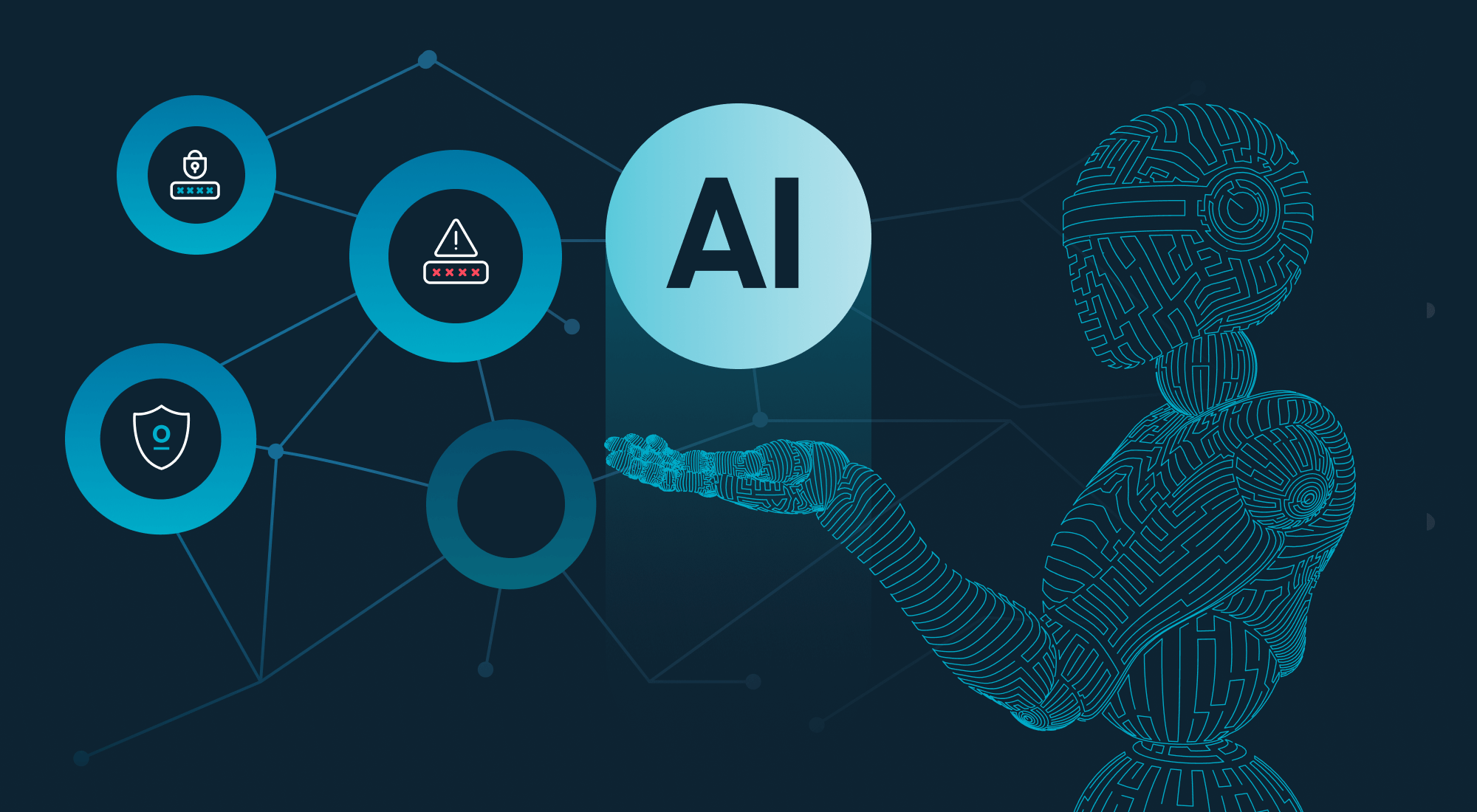AI's (artificial intelligence) potential in asset finance is remarkable. In our previous blog in this series, 'AI's Greatest Areas of Impact Within Asset Finance,’ we discussed how AI can revolutionize asset finance and equipment leasing by enhancing customer service, harnessing predictive analytics for risk evaluation, and fortifying fraud detection and prevention measures, among other key benefits.
Yet, like any transformative tool, integrating AI into your business warrants a cautious approach. While the possibilities are exciting, AI technology is still evolving. As such, considerations such as AI ethics and regulatory compliance remain in a state of flux.
These early-stage uncertainties demand a vigilant approach from companies looking to incorporate AI-driven solutions into their business. From ethical considerations to regulatory compliance and beyond, companies need to proactively address certain AI-related challenges to harness their full potential while mitigating associated risks.
More than meets the AI
While the potential of AI is vast, there's a crucial concern: historically embedded biases in data can influence critical decision-making processes in leasing and lending, such as credit assessment. This means decisions based on biased historical data can perpetuate and even amplify certain biases prevalent in the world around us, shaping future outcomes. It's a cycle: biased results become training data for tomorrow's decisions, continuing the pattern.
For asset finance companies operating in regions with a history of discrimination against certain ethnic groups, genders, or minorities, this is a critical consideration. Throughout history, access to affordable credit has been used as a tool for financial freedom and prosperity, yet it's often been unequally distributed, creating societal imbalances. Despite legislative efforts like the Fair Credit Reporting Act and the Equal Credit Opportunity Act, bias in lending persists. Recent studies, such as a 2019 study of 3.2 million mortgage applications1 and 10.0 million refinance applications, have revealed evidence of racial discrimination in algorithmic lending.
Eliminating bias from AI is not a one-time exercise. Companies deploying AI tools will need to ensure ongoing monitoring and evaluation of AI outcomes and keep refining algorithms over time. It's also crucial to ensure diverse representation within the teams responsible for developing and deploying AI algorithms. By incorporating perspectives from individuals with varying backgrounds and experiences, companies can identify and address biases more effectively. Proactive steps, regular AI audits, continuous monitoring, and transparency in AI operations can help companies detect and address biases, ensuring fairness and ethical practices.
Data privacy and AI’s Achilles’ Heel
AI's effectiveness hinges on vast datasets, increasing privacy and security concerns around data security and privacy.
Some of AI’s most effective use cases rest around leveraging customer-centric data for a myriad of outcomes- personalized products and services, business insights, and KYC among others. This reliance, in turn, has also sparked global unease about data anonymity and privacy for individuals, especially in scenarios where most end-users are unaware of how AI tools process, manage and store all this data.
Governments worldwide are responding with data policy frameworks such as the GDPR (General Data Protection Regulation) and CCPA (California Consumer Privacy Act) to address these concerns. However, there is little clarity on how to prevent data leakage from the training data set.
For example, some AI third-party tools can unmask anonymized data through inferences (that is, deducing identities from behavioral patterns). Similarly, AI may remember information about individuals in the training set after the data is used, or AI’s outcome may leak sensitive data directly or by inference. Given that asset finance and leasing companies handle customers' financial information, safeguarding this data and having a clear understanding of what kind of data AI-based tools have access to and how they use them is extremely important.
Companies will need to invest in solutions that ensure robust data security measures and transparent data usage policies. Investing in solutions that adhere to global security standards like SOC and ISO 27000 Series and real-time threat detection and encryption will help businesses mitigate risks effectively while maintaining regulatory compliance. This approach not only strengthens customer trust but also helps mitigate potential risks associated with data breaches or misuse.
Operating in the dark
AI ‘Black Boxes’ are emerging as a challenge around data transparency and outcome opaqueness. Many AI systems today operate as complete "black boxes"- where their inner workings—algorithms, training data, and models—are invisible to users, making it difficult to understand the outcomes and decision-making processes. As financial institutions increasingly rely on third-party AI-enabled tools, this lack of transparency can be a point of concern.
For instance, imagine a scenario where an AI-powered tool decides to deny a loan application. Without insight into how the decision was reached, it becomes challenging to address customer inquiries or ensure compliance with regulations. Not only do these complicate internal processes but also undermine trust with customers and regulatory bodies. While researchers are still trying to de-code how machine-learning algorithms – especially deep-learning ones – work, companies that deploy third-party party AI tools must be cognizant of this fact when implementing AI.
Garbage in, garbage out
Data quality is a crucial aspect of data-driven AI applications, each presenting its unique challenges. Poor data quality can result in inaccurate or biased AI models, especially in critical fields like finance. Insufficient data can lead to oversimplified models that fail to predict real-world outcomes accurately.
In the asset finance and lending industry, many organizations still grapple with siloed data residing in legacy tools and applications, alongside data trapped in paper-based files or contracts. Asset finance leaders considering AI adoption must ensure that organizational data undergoes digitization, validation, cleanup, and ideally, migration to the cloud. While this may seem obvious, it's worth noting that Gartner predicts a staggering 85% of AI projects will yield erroneous outcomes due to bias in data, algorithms, or the teams managing them 2.
Thankfully, this problem has a simple solution. A comprehensive asset management platform will automatically streamline data validation and organization processes, ensuring high-quality data for AI-driven insights. By centralizing data and facilitating digitization, businesses can mitigate errors and biases, maximizing the effectiveness of AI models.
Smart watch
The adoption of AI in asset finance introduces a new era of technological advancement while simultaneously exposing companies to unique cybersecurity threats. As businesses prioritize digitizing data to fuel AI-based models, they inadvertently create opportunities for criminals to engage in data poisoning and manipulation.
The interconnectedness of AI systems, coupled with data streaming in from IoT-connected devices, expands the surface area for security breaches and amplifies the threat landscape exponentially. Unfortunately, the complexity and frequency of these attacks are poised to increase as disruptive technologies become more mainstream.
By prioritizing cybersecurity in software selection and implementation, companies can bolster their resilience against emerging threats and safeguard their assets and sensitive data effectively. The right asset finance software creates a secure and encrypted environment for AI operations, protecting sensitive financial data and proprietary information. It enforces strict access controls and authentication measures, allowing only authorized personnel to interact with the AI system. With real-time threat detection, the software monitors for suspicious activities and breaches, enabling asset finance organizations to quickly respond and prevent compromises. This ensures the integrity of AI-driven operations and serves as a robust defense against evolving cyber threats.
A systematic approach to systemic risks
The integration of AI into the financial sector introduces the possibility of new systemic risks. Given the interconnected nature of financial institutions, it's crucial to proactively identify and mitigate these risks to maintain sector stability.
For example, consider a scenario where multiple banks use AI algorithms for high-frequency trading (a trading method that uses powerful computer programs to transact many orders in fractions of a second). If one bank's AI system experiences a malfunction or makes erroneous decisions due to unforeseen circumstances, it could trigger a chain reaction across other interconnected institutions, leading to market instability or even financial crises.
To prevent such systemic risks, regulatory bodies and financial institutions must collaborate to establish robust risk management frameworks and contingency plans tailored to the unique challenges posed by AI integration in finance.
Embracing AI responsibly
The adoption of AI in asset finance and equipment leasing presents both opportunities and risks. By leveraging the right asset finance platform, organizations can effectively mitigate these risks while maximizing the benefits of AI-driven innovation.
From driving automation to facilitating data digitization, cleansing, and organization, advanced software solutions play a crucial role in ensuring data integrity and security. By prioritizing cybersecurity measures and implementing robust data management practices, companies can safeguard sensitive information, address biases, and maintain regulatory compliance.
Through strategic investment in the right technology, asset finance and equipment leasing companies can confidently navigate the complexities of AI integration, driving sustainable growth and innovation in the industry.
Sources:
2. Gartner
Learn why companies trust Odessa to help deliver great stakeholder experiences.
Let’s Talk

